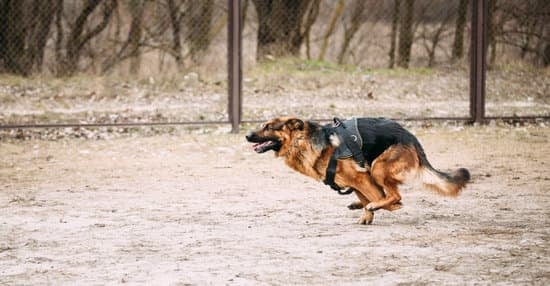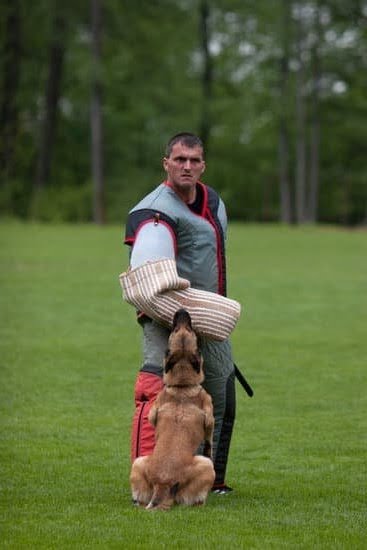Small dogs may be pint-sized, but they certainly don’t lack in personality. The question often arises: do small dogs need training? The answer is a resounding yes. Just like their larger counterparts, small dogs require proper training to ensure they are well-behaved, obedient, and safe members of the family and community.
Training for small dogs is crucial for a number of reasons. From teaching basic commands to addressing behavioral issues, training helps small dogs become well-adjusted pets. In this article, we will explore the importance of training for small dogs, dispel common misconceptions about small dog training, discuss basic commands and the benefits of training, as well as touch upon socialization and the challenges of training smaller breeds.
While there may be myths surrounding the necessity of training small dogs due to their size, it is essential to understand that all dogs, regardless of their stature, can greatly benefit from proper training. Whether you have a Chihuahua or a Pomeranian, taking the time to train your small dog will ultimately lead to a happier and more harmonious relationship between you and your furry companion.
So let’s delve into the world of small dog training and discover how it can positively impact your pet’s life.
Common Misconceptions About Small Dog Training
When it comes to training small dogs, there are several misconceptions that can lead to ineffective or even harmful training methods. One common misconception is that small dogs do not need as much training as larger breeds. This could not be further from the truth. Just like their larger counterparts, small dogs require consistent and proper training to ensure good behavior and obedience.
Another misconception about small dog training is that it is okay for them to display aggressive behavior because of their size. Some people believe that because a small dog cannot cause as much physical harm as a large dog, it is not necessary to address behaviors such as barking, growling, or snapping. However, it is important to establish boundaries and proper behavior in all dogs, regardless of their size.
Some individuals also believe that small dogs are too fragile or delicate for rigorous training methods. While it is true that certain physical activities may need to be adjusted for a smaller frame, small dogs are still capable of learning and responding well to training commands just like any other breed.
To debunk these misconceptions about small dog training, it is essential to approach their training with the same level of seriousness and commitment as with larger breeds. By understanding the specific needs and behaviors of small dogs, trainers can effectively dispel these myths and provide the appropriate guidance for successful training outcomes.
- Seek professional guidance when in doubt
- Consistency is key in your approach
- Do not underestimate the importance of proper socialization
Basic Training Commands for Small Dogs
Training small dogs is just as important as training larger breeds. While some may think that small dogs don’t need training because of their size, the truth is that all dogs can benefit from learning basic commands and good behavior. Small dogs are just as capable of misbehaving or causing issues if they are not properly trained.
Common Commands
Small dogs should be taught common commands such as sit, stay, come, and leave it. These commands are essential for keeping them safe and well-behaved in various situations. Training small dogs to follow these commands will help ensure their safety and make it easier for owners to manage them in different environments.
Potty Training
Potty training is another crucial aspect of basic training for small dogs. Teaching them where and when to go potty will prevent accidents indoors and help maintain a clean living environment. Consistency and positive reinforcement are key when it comes to potty training small breeds.
Leash Training
Learning how to walk on a leash without pulling is essential for small dog owners. Small breeds can easily become overwhelmed or overexcited during walks, so teaching them proper leash manners is important for their safety and the enjoyment of daily walks.
The Benefits of Training for Small Dogs
Training for small dogs is not just a luxury, but a necessity for their overall well-being and the harmony of your household. While some may believe that small dogs are less in need of training due to their size, they actually benefit greatly from structured training.
Improved Behavior
Training helps instill good behavior in small dogs, such as following basic commands, walking politely on a leash, and being able to interact positively with people and other pets. A well-trained small dog is more likely to be better behaved and less likely to engage in destructive behaviors such as excessive barking or chewing.
Bonding and Communication
Training allows you to establish strong communication between you and your small dog, leading to a deeper bond. It also provides mental stimulation for your dog, giving them something constructive to focus on while providing an outlet for their energy. This can help prevent boredom-related behavioral issues in small dogs.
Safety
A well-trained small dog is less likely to run into dangerous situations by not obeying commands or getting into conflicts with other animals. For example, teaching your small dog the “come” command could be life-saving if they were ever to escape from your home or get lost during outdoor activities.
The Role of Socialization in Small Dog Training
Small dogs, just like their larger counterparts, require training to ensure they are well-behaved and obedient pets. One important aspect of small dog training is socialization. This process involves exposing your small dog to different environments, people, and animals in a controlled and positive manner. Socialization is crucial for ensuring that your small dog develops the necessary social skills and behavior to interact with others in a friendly and non-threatening manner.
To effectively socialize a small dog, consider the following tips:
- Start early: Begin socializing your small dog as soon as you bring them home. Early exposure to various stimuli will help them become comfortable and confident in new situations.
- Positive experiences: Ensure that your small dog’s interactions with new people, animals, and environments are positive. Use treats, praise, and toys to make these experiences enjoyable for them.
- Gradual exposure: Introduce your small dog to new experiences gradually. For example, start with quiet environments before progressing to busier ones.
Socialization plays a vital role in preventing fear-based behaviors such as aggression or anxiety in small dogs. When properly socialized, they are more likely to be well-adjusted pets that can confidently navigate various situations without becoming stressed or agitated.
In addition to regular obedience training, incorporating socialization into your small dog’s routine will help them grow into friendly, well-mannered companions. If you are unsure about how to approach socialization for your small dog, consult with a professional trainer who can provide guidance tailored to your pet’s specific needs.
Challenges and Considerations for Training Small Dogs
Training small dogs can present its own set of challenges and considerations compared to larger breeds. One common misconception is that small dogs don’t need as much training as bigger dogs, but in reality, all dogs require proper training to ensure they are well-behaved and obedient pets.
Small dogs may also face unique challenges, such as difficulty reaching items or furniture that they shouldn’t access, and a tendency to develop “small dog syndrome,” where they display behavioral issues due to their size.
Additionally, it’s important for small dog owners to consider the potential physical limitations of their pets when it comes to training. Their small size may make certain training exercises more difficult, such as leash training or agility activities. It’s crucial for owners to take these challenges into account and adjust their training methods accordingly to suit the needs of their small dogs.
Another consideration for training small dogs is their tendency to be more sensitive than larger breeds. This means that harsh training methods can have a greater negative impact on them. Positive reinforcement techniques, such as using treats or praise, tend to be more effective and less stressful for smaller breeds. Tailoring the training approach to the specific needs and characteristics of small dogs will ultimately lead to better results and a more positive experience for both the pet and owner.
| Challenges | Considerations |
|---|---|
| Small dog syndrome | Physical limitations |
| Sensitivity | Training approach |
Positive Reinforcement Training Methods for Small Dogs
Training small dogs is just as important as training larger breeds. Small dogs may be easier to physically control, but they are not necessarily easier to train. It is a common misconception that small dogs don’t need training because of their size. However, small dogs still need to learn basic commands and proper behavior to ensure they can coexist harmoniously with their owners and other pets.
One effective method for training small dogs is positive reinforcement. This approach involves rewarding good behavior with treats, praise, or toys. When small dogs exhibit the desired behavior, such as sitting on command or walking calmly on a leash, they should be rewarded immediately. This helps them understand what is expected of them and encourages them to repeat the behavior in the future.
Positive reinforcement training methods have been proven to be highly effective for small dogs. These methods focus on building a strong bond between the owner and the dog, creating a positive and enjoyable learning experience for both parties. By using rewards and encouragement, small dogs are more likely to respond well to training and develop good habits.
One key benefit of positive reinforcement training for small dogs is that it creates a trusting and respectful relationship between the owner and the pet. The use of force or punishment in training can often lead to fear or aggression in small dogs, whereas positive reinforcement helps build confidence and trust. This method also promotes a happy and harmonious environment at home, as well-behaved small dogs can integrate better into family life.
| Positive Reinforcement Training Methods | Benefits |
|---|---|
| Effective use of rewards and encouragement | Creates a trusting relationship between owner and pet |
| Promotes good behavior without causing fear or aggression | Fosters a happy and harmonious home environment |
Finding the Right Training Approach for Your Small Dog
Training small dogs is essential for their overall well-being and integration into the family. The right training approach varies depending on the dog’s breed, age, and temperament. It’s important to tailor the training method according to your small dog’s specific needs.
One common misconception about small dog training is that smaller breeds are easier to handle and do not require as much guidance as larger dogs. However, the truth is that all dogs, regardless of size, need proper training. Small dogs can exhibit behavioral issues just like any other dog if they are not given proper guidance and structure.
When it comes to finding the right training approach for your small dog, positive reinforcement methods have proven to be effective. This means rewarding good behavior with treats, praise, or toys. Positive reinforcement creates a strong bond between you and your dog while encouraging them to repeat desirable behaviors.
It’s also important to consider the individual personality of your small dog when determining the best training approach. Some dogs may respond well to clicker training or agility exercises, while others may prefer a more low-key approach such as leash walking or basic obedience commands. Consistency and patience play a crucial role in finding the right approach for your small dog, so be sure to stay committed to their training journey.
Recommended Resources for Small Dog Training
In conclusion, the question “Do small dogs need training?” has a clear answer: yes, they absolutely do. As outlined in this article, the importance of training for small dogs cannot be overstated. Small dog training is essential for their safety, the well-being of their owners, and for promoting good behavior and obedience.
While there are common misconceptions about small dog training, it is crucial to understand that all dogs, regardless of size, require proper training and guidance. Basic training commands such as sit, stay, come, and walking on a leash are not only beneficial for small dogs’ behavior but also enhance the bond between the owner and pet.
The benefits of training for small dogs are numerous; from improved communication between owner and pet to creating a well-mannered and socialized companion. It is important to choose positive reinforcement methods and find resources that suit your small dog’s needs best. By investing time and effort into small dog training, owners can ensure that their beloved pets are happy, well-adjusted members of the family.
Frequently Asked Questions
Are Smaller Dogs Harder to Train?
Smaller dogs are not necessarily harder to train, but they may require a different approach compared to larger breeds. Their size can make some training techniques more challenging, but with patience and consistency, small dogs can be trained effectively.
What Is the Best Training for Small Dogs?
The best training for small dogs often involves positive reinforcement methods such as clicker training or using treats as rewards. Small dogs may respond well to agility training or obedience classes tailored to their size. It’s important to find a training method that suits the individual dog’s personality and energy level.
What Are the Cons of Having a Small Dog?
Some potential cons of having a small dog include their fragility, especially around small children who may accidentally injure them. Small dogs also tend to have higher energy levels and may require more exercise and mental stimulation than larger breeds. Additionally, they can be more prone to certain health issues due to their size.

Welcome to the blog! I am a professional dog trainer and have been working with dogs for many years. In this blog, I will be discussing various topics related to dog training, including tips, tricks, and advice. I hope you find this information helpful and informative. Thanks for reading!





